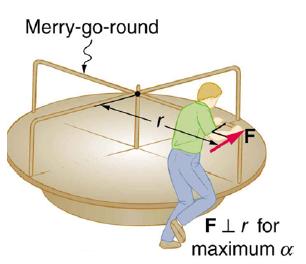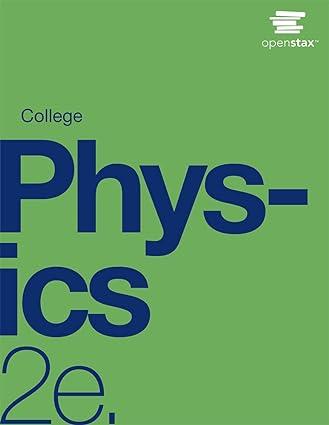This problem considers energy and work aspects of Example 10.7use data from that example as needed. (a)
Question:
This problem considers energy and work aspects of Example 10.7—use data from that example as needed.
(a) Calculate the rotational kinetic energy in the merry-go-round plus child when they have an angular velocity of 20.0 rpm.
(b) Using energy considerations, find the number of revolutions the father will have to push to achieve this angular velocity starting from rest.
(c) Again, using energy considerations, calculate the force the father must exert to stop the merry-go-round in two revolutions
Data given in Example 10.7
Consider the father pushing a playground merry-go-round in Figure 10.12. He exerts a force of 250 N at the edge of the 50.0-kg merry-go-round, which has a 1.50 m radius. Calculate the angular acceleration produced
(a) When no one is on the merry-go-round and
(b) When an 18.0-kg child sits 1.25 m away from the center. Consider the merry-go-round itself to be a uniform disk with negligible retarding friction.
Strategy
 To solve for α, we must first calculate the torque τ(which is the same in both cases) and moment of inertia Ι (which is greater in the second case). To find the torque, we note that the applied force is perpendicular to the radius and friction is negligible, so that
To solve for α, we must first calculate the torque τ(which is the same in both cases) and moment of inertia Ι (which is greater in the second case). To find the torque, we note that the applied force is perpendicular to the radius and friction is negligible, so that![]()
Step by Step Answer:






